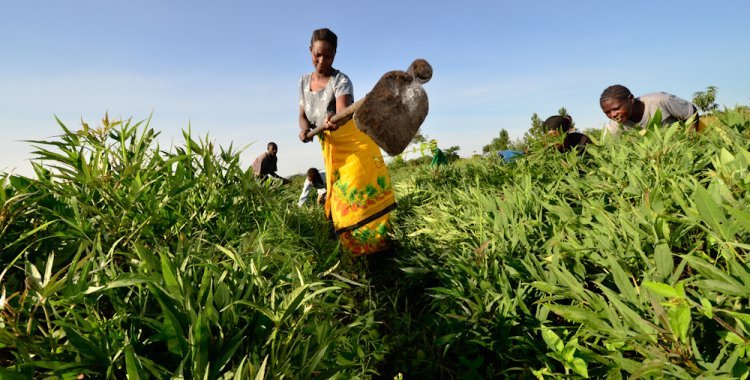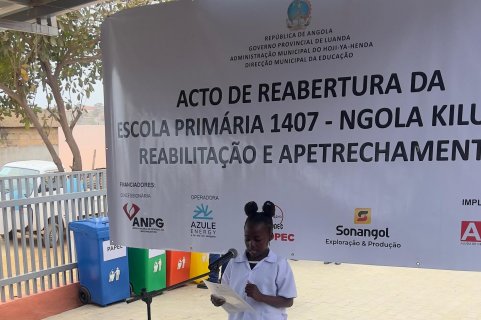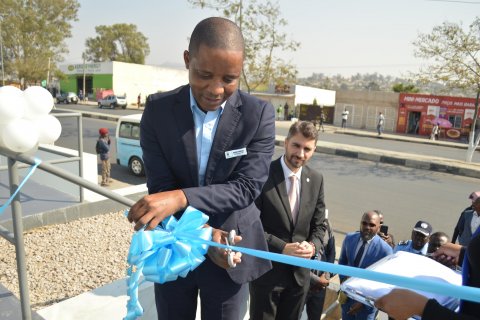The data are contained in the first Census of Agriculture, Livestock and Fisheries (Rapp) carried out after independence in the corresponding sectors, referring to the period 2019 and 2020, which unfolded in four modules, namely the List of Households, Community, Agricultural Explorations and Family Fishing, and Business Agricultural, Livestock and Aquaculture Explorations.
Data show that 1.6 percent of family farms received technical assistance, with emphasis on the province of Malanje (5.9 percent), followed by Cabinda (3.6 percent) and Bié (2.6 percent) and without any assistance to the province of Cuando Cubango.
Angola has a percentage of 96.4 percent of cultivated area, with the province of Lunda Norte leading (99.2 percent) and Lunda Sul with the lowest percentage in the country (92.1 percent).
The percentage in the country of family farms that grow maize is 76.4 percent, with Bié (99.4 percent) and Cunene ahead with 27.1 percent.
In terms of irrigation, the census points out that 14.4 percent of family farms use irrigation, mostly in Luanda province (42.6 percent) and with less use in Lunda Norte (0.9 percent).
With regard to livestock activity, Rapp reports that a total of 1.4 million livestock holdings were identified, of which chicken (77 percent), goats (31 percent), pigs (21 percent), cattle (18 percent) and sheep (2 percent).
The province of Huambo (6.6 percent) is the leader in family livestock farms, and Uíge (0.2 percent) is the one with the smallest family farms, with the province of Cunene at the forefront. in raising goats (61 percent) and pigs (41 percent), losing to the province of Namibe in raising cattle (47.6 percent) and Cabinda for sheep (6.5 percent).
With regard to aquaculture activity, Rapp revealed that 8263 family farms in this sector, mostly practiced on land (dug pond), with 91 percent, and only 6.4 percent in ponds, mainly native tilapia species (98 percent percent) and native catfish (95 percent).
Regarding business farming, livestock and aquaculture explorations, of the 5887 existing ones, 5858 were registered, which indicated that the province of Benguela has the largest number of companies (13.8 percent) and Cabinda with the smallest park (0.8 percent ), mainly in the agricultural branch (92 percent), then livestock (40 percent), aquaculture (6.8 percent) and forestry/agroforestry (0.2 percent).
Of the total number of companies, 47.3 percent are individual companies, 26.0 percent are private limited companies, 22.1 percent are cooperatives and 0.3 percent are state-owned companies, with men leading the percentage of owners (91 percent).
A total of 4.3 percent of agricultural, livestock and aquaculture business operations in the country received technical assistance, with emphasis on the province of Cabinda (29.6 percent) and with none in Namibe, with Moxico being where companies had the greater number of access to credit (15.5 percent) and with less access in the province of Lunda Sul (1.4 percent).
At the data presentation ceremony, the Secretary of State for the Economy, Ivan dos Santos, stressed that with this agricultural, livestock and fisheries census, the Government is in a better position to reformulate public policies and make decisions aimed at improving the performance of agriculture, livestock and fisheries, as well as promoting economic diversification.
In turn, the World Bank (WB) representative, Juan Alvarez, pointed out that around 24,000 villages were visited by the field teams, who interviewed around 2.5 million family farms.
"The World Bank is proud to have been a partner in this important undertaking", said Juan Alvarez, adding that the Bank's financing portfolio in Angola includes key sectors for reducing poverty and promoting inclusive and sustainable growth, of which agriculture stands out.
According to the WB representative, the parts of Angola that suffer most from extreme poverty are in the rural sector, with "a rate three times higher than poverty in urban areas".
The representative of the Food and Agriculture Organization of the United Nations (FAO), Maria do Nascimento, considered that with the census Angola will now have a better picture of the productive structure, namely agriculture, not only family farming, but also small, medium and large scale, as well as economic agents, value chains and the use of labor both at the family level and in terms of activities carried out by economic undertakings.







